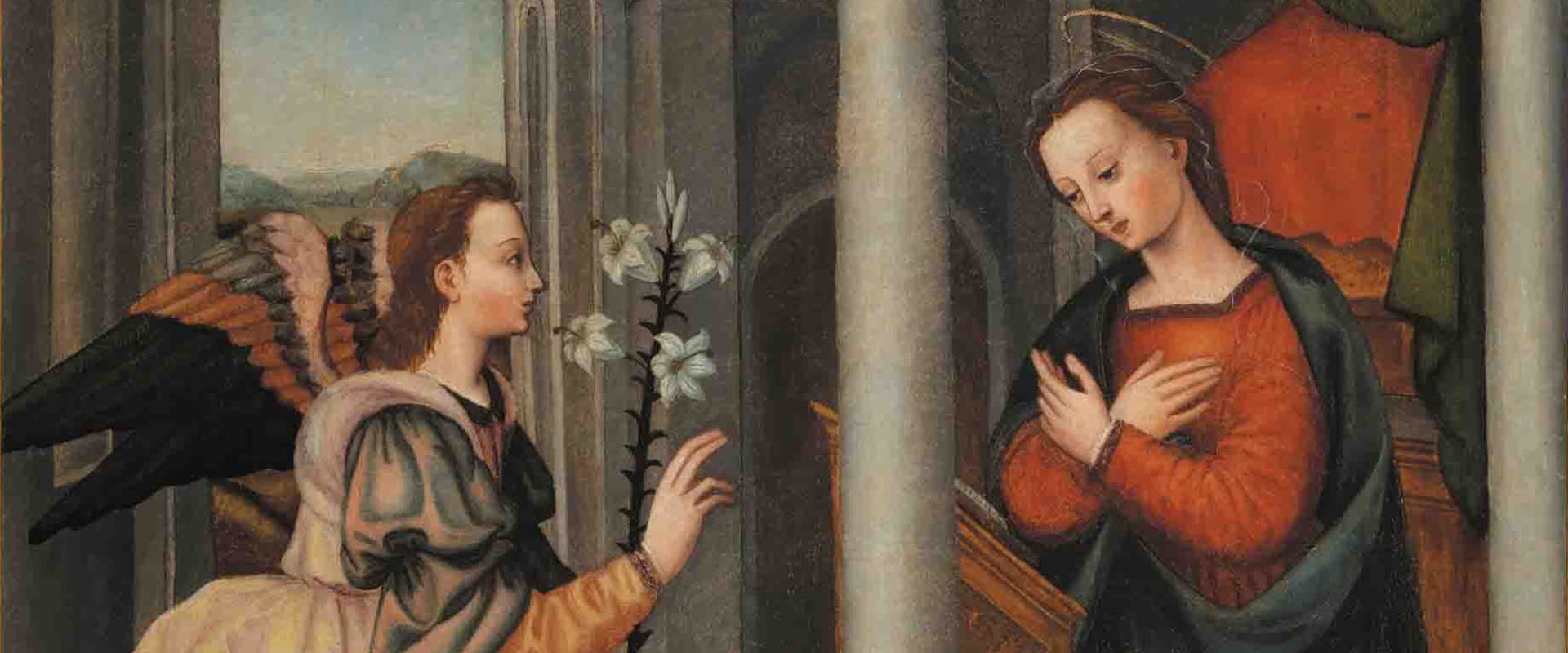Plautilla Nelli. Art and devotion in the convent in Savonarola's footsteps
Plautilla Nelli (Florence 1524-1588), the "first Florentine paintress".
Plautilla Nelli entered the Dominican convent of Santa Caterina in Cafaggio - in Piazza San Marco, Florence - at the age of fourteen. Imbued with Savonarola's mysticism, she was a passionate interpreter of the figurative poetics inspired by Girolamo Savonarola's teaching in the field of the arts and by the new disciplined model of female holiness of the Tridentine reform.
In the Florentine monastery, she held the position of the prioress. She was the head of a flourishing artistic workshop, thanks to which many of her sisters contributed to the diffusion of sacred images, using a truly professional painting technique. Understood as an integral part of the sisters' daily work and approved as a rule for all Dominican tertiaries, the creation of sacred images was valued essentially for their devotional effectiveness and certainly not from the point of view of stylistic or compositional originality. The 'conservative' taste in art of the nuns - and of Plautilla Nelli in particular - reflected the scale of the most esteemed values, among which at the highest level were those that represented the continuity of the illustrious Dominican artistic tradition.
The artistic activity of the convent of Santa Caterina in Cafaggio was destined to satisfy principally the demand of a market made up of 'relatives and clients', that is, those who were linked to the vast network of Tuscan convents of the Order of Preachers. Demand was so widespread as to imply seriality, like the four paintings depicting the image of a Dominican saint portrayed in profile around which the entire exhibition revolves.
The sale of these works became fundamental to the life of St Catherine's Convent in the aftermath of the reform of women's monasteries enacted by the Tridentine decrees (1566), which sanctioned the prohibition of seeking donations outside the convent walls.
The changes made to the inscriptions bearing the name of St Catherine from Siena that can be distinguished in the series of four paintings are named after "another Catherine": Sister Caterina de' Ricci, Plautilla's peer and also a fervent Savonarolian, suggesting the possibility that in these portraits Nelli wished to represent the "holy nun" of Prato, equalling her with the saint from Siena.
Finally, the time has come to dedicate an exhibition to Plautilla, the time to redeem her historical memory and her works of art that are often unjustly attributed to male artists. Indeed, this exhibition opens the series of initiatives that the Uffizi Galleries plan to carry out every year dedicated to the women who knew how to stand out in the arts field.
The exhibition, curated, like the catalogue published by Sillabe, by Fausta Navarro, is promoted by the Ministry of Cultural Heritage and Activities and Tourism with the Uffizi Galleries and Firenze Musei and has been realised with the generous contribution of the Advancing Women Artists Foundation and with the collaboration of the Textile Museum of Prato.
The catalogue entitled "Plautilla Nelli. Art and Devotion in the Convent in Savonarola’s Footsteps" and the homonymous short documentary video have been produced with the contribution of the Advancing Women Artists Foundation, which has also financed the restoration of 5 works and 2 manuscripts on display, some of which have been newly attributed.
The American foundation (www.advancingwomenartists.org), operating in Florence since 2006, is committed to the restoration and exhibition of women's art preserved in the city's museums and churches. In the last decade, it has restored 21 works by Plautilla Nelli, contributing significantly to the artist's rediscovery and spreading her story in Florence and around the world.
"Few people know that Florence has been a true centre for women's art for over five centuries," explains Jane Fortune, founder and president of AWA. "The works of female artists that we have traced and catalogued in the museums and churches of Florence are more than 2,000. They are an 'invisible' part of art history, which must be brought back to the public. Plautilla Nelli paved the way for other women of her time and enjoyed unprecedented success. Inspiration is the real impetus for our mission: to give a voice to women artists of the past. Thanks to this exhibition, Nelli will no longer be among the 'invisible' women artists.”
